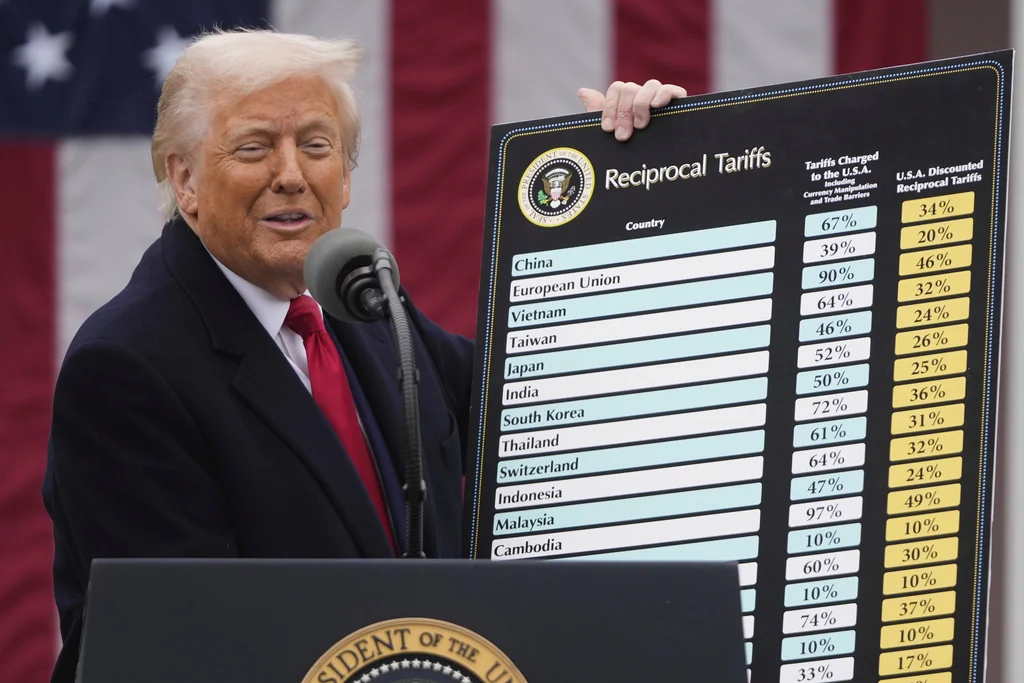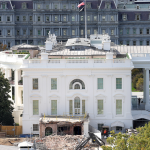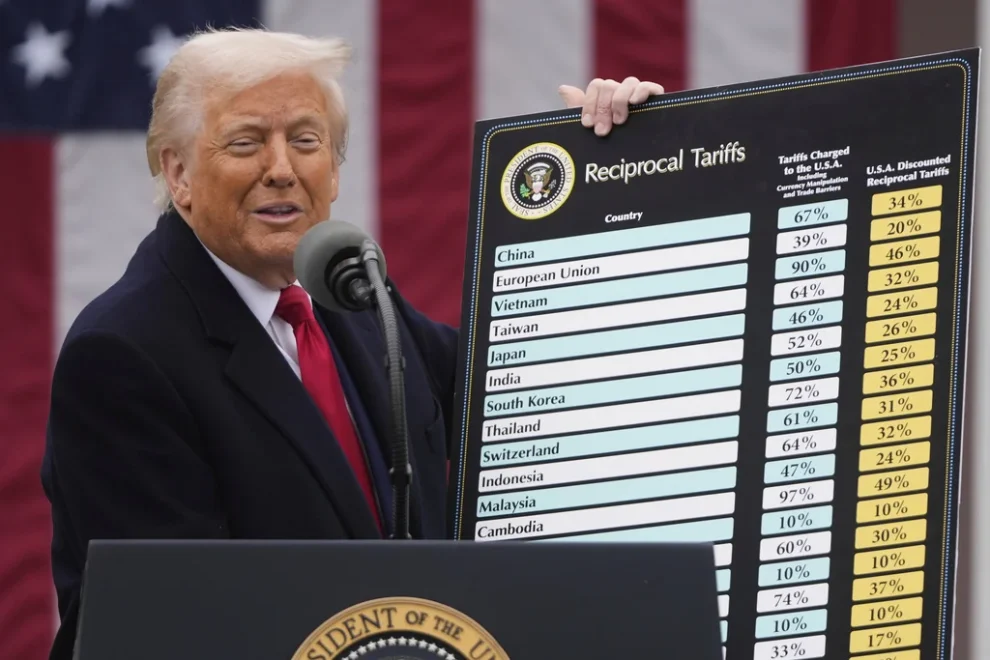After President Donald Trump announced a 90-day pause in imposing his “Liberation Day” tariffs, trade adviser Peter Navarro touted the possibility of “90 deals in 90 days.” In truth, it hasn’t been that easy, and the deadline is up on July 9. This Washington Examiner series, 90 Deals in 90 Days, will look at how we got here, where we’re going, and some of the unforeseen consequences that have cropped up.
President Donald Trump’s self-imposed July 9 deadline to make trade deals with several countries is set to expire this week. The administration has only inked two agreements with the United Kingdom and Vietnam, and is coming close to a third with India.
That number falls well short of the ambitious numbers touted in April when the president announced a three-month pause from his “Liberation Day” tariffs that rocked international markets. Members of Trump’s Cabinet, namely trade adviser Peter Navarro, initially floated the possibility of as many as “90 deals in 90 days.” Treasury Secretary Scott Bessent lowered expectations by adjusting it to “more than 75” nations, and later stated negotiations would focus on “18 important trading partners.” Even though some Trump officials indicated they would be open to moving the deadline to Labor Day, the president remained steadfast, telling reporters he wasn’t planning an extension.
U.S. officials have been juggling negotiations ahead of the deadline with representatives from Japan, the European Union, India, South Korea, and other nations traveling to Washington to avoid double-digit tariffs.
Trump blamed the lack of progress on foreign governments being “spoiled from having ripped us off for 30, 40 years.”
Late Thursday, Trump said letters informing countries of their specific tariff rates will begin going out Friday, with “10 to 12” letters issued each day until all trade partners are “fully covered” by July 9.
‘Destined to fail’
Babak Hafezi, an adjunct professor of international business at American University, told the Washington Examiner that getting so many deals across the finish line was always going to be difficult.
“Trade policy and agreements are not quick and take time,” he said. “Trade is a multi-faceted problem that affects industries in so many different ways. The [Trans-Pacific Partnership] had taken over eight years to negotiate when it was canceled in the first Trump administration in 2016. Thus, attempting to change the entire global economic trade system with the U.S. in 90 days was destined to fail.”
U.S. Hispanic Business Council founder and CEO Javier Palomarez was slightly more optimistic.
“While we may not have reached the 90-deal goal, the agreements with the United Kingdom and Vietnam are still meaningful,” he told the Washington Examiner. “The U.K. deal reinforces one of our strongest economic alliances, while the Vietnam deal opens the door for U.S. producers in agriculture, [automobiles], and energy to compete more fairly in Southeast Asia. With that said, reaching only two deals out of 90 is simply insufficient. It’s clear now that the promise was too ambitious, but that does not mean that efforts need to stop.”
If no more deals are made by the time Trump’s tariff clock runs out, it could mean a repeat of what U.S. investors, businesses, and everyday people saw back in April when the markets panicked, the Dow and S&P went into free fall, and 401Ks tanked.
Trump first announced the tariffs at his “Liberation Day” White House event on April 2. He held up a huge white poster board with what appeared to be a list of random levies on dozens of countries. The president announced the taxes would end decades of the U.S. being “looted, pillaged, raped, and plundered” by its global trading partners.

What happened next was the stuff of financial nightmares. “Liberation Day” led to a massive selloff, and investors began dumping U.S. assets.
In response, the Trump administration announced on April 9 a 90-day pause on nearly all of the country-specific reciprocal tariffs, reducing them to a 10% baseline while the United States negotiated new bilateral trade agreements, the majority of which have failed to materialize.
“As July 9 approaches, the Trump administration should avoid a replay of its ‘Liberation Day’ tariff debacle,” Bryan Riley, director of Free Trade Initiative at National Taxpayers Union, told the Washington Examiner. “Even if it maintains its 10% universal tariff and avoids additional country-specific tariffs, Americans will continue to pay historically high tariffs.… High tariffs imposed by President Trump are often defended as ‘He is just doing what he promised.’ In reality, the administration has entirely pivoted away from his promise of tariff reciprocity.”
“Instead, U.S. tariff rates now exceed those imposed by most of our trading partners. Although the stock market has rebounded from its ‘Liberation Day’ drop, tariff uncertainty remains high. Whatever happens on July 9, that uncertainty is likely to weaken U.S. economic prospects and undermine any benefits generated by the One Big Beautiful Bill Act.”
Democratic strategist David McLaughlin was more blunt in his assessment.
“I am not even sure we have even heard the full story on the negotiations with Vietnam and the United Kingdom,” he told the Washington Examiner. “Americans should be regretting putting the guy who filed six casino bankruptcies in charge of the entire economy.”
Bracing for impact
Last week, an analysis by JPMorganChase Institute measured the direct costs created by the import taxes on mid-sized businesses, those with $10 million to $1 billion in yearly revenue, which encompass about one-third of U.S. private sector workers.
The report showed that those companies are more dependent than other businesses on imports from China, India, and Thailand, and that the import taxes would hit retailers hardest. The findings showed clear trade-offs from Trump’s import taxes, contradicting his claims that foreign manufacturers would absorb the costs of the tariffs. Had the “Liberation Day” tariffs stayed in place, JPMorganChase estimated that the companies would have faced direct costs of $187.6 billion.
“So far in 2025 CEOs have gone from crisis management and daily steerco meetings reminiscent of Covid days to ‘wait and see’ to bringing tariff predictions into market forecasts,” Rebecca Homkes, faculty at London Business School and author of Survive, Reset, Thrive: Leading Breakthrough Growth Strategy in Volatile Times, told the Washington Examiner. “As we quickly approach the July 9 deadline, most are modeling (aka guessing) where these will end up and attempting to manage expectations. The latest round of earnings reports was heavy on tariff language, and more recently we are getting numbers behind what this could mean for price increases for consumers and pass-on effects.”
She also warned of “a danger in prolonged paralysis — not simply due to falling behind others but also losing the necessary strategic muscle to perform in this environment.”
In the absence of a large number of deals, the Trump administration has boasted of the two it has made with the U.K. and Vietnam.
Vietnam locks in lower tariff
The trade deal with Vietnam, announced last week, includes rolling back tariffs on Vietnamese products in exchange for the South Asian nation to open up its markets to American goods. “It will be a Great Deal of Cooperation between our two Countries,” Trump wrote on Truth Social.
The declaration marked the first such agreement with a country with which the U.S. has a trade deficit and came just days shy of when a “reciprocal” tariff rate of 46% was supposed to kick in. The president posted that the U.S. would apply a 20% tariff on imported Vietnamese goods and a 40% tax on goods from other countries shipped to the U.S. via Vietnam.
“In return, Vietnam will do something that they have never done before, give the United States of America TOTAL ACCESS to their Markets for Trade,” Trump wrote. “In other words, they will ‘OPEN THEIR MARKET TO THE UNITED STATES,’ meaning that, we will be able to sell our product into Vietnam at ZERO Tariff.”
Vietnam is the country’s eighth-largest trading partner, with about $150 billion in two-way trade last year. However, the nation also accounts for the U.S.’s third-largest trade deficit — the difference between the goods and services it buys from other countries and those it sells to them — hitting more than $122 billion in 2024 and putting it behind China and Mexico.
Vietnam has emerged as a key manufacturing hub for major global brands including Nike, Apple, Gap, and Lululemon. The country has benefited as companies shifted production out of China to sidestep the tariffs imposed during Trump’s first term.
Analysts responded critically to Trump’s trade announcement, pushing back on his characterization of it as a victory for the U.S.
“Vietnam doesn’t pay tariffs on goods we import!” American Immigration Council senior fellow Aaron Reichlin-Melnick posted on social media, noting that Trump’s explanation of the deal is not how tariffs work. “This deal means American businesses will pay a 20% tax on the $140 billion we import from Vietnam, while Vietnamese businesses will pay no taxes on the $13 billion we export. That’s… not good.”
Matt Priest, president and CEO of Footwear Distributors and Retailers of America, told the New York Times that the tariffs on Vietnam would raise the cost of shoes for customers.
“Vietnam is essential to the U.S. footwear supply chain, especially for athletic shoes,” he said. “Many of these shoes already carry a 20% tariff, particularly popular athletic styles. Piling new tariffs on top of that isn’t just unnecessary — it’s bad economics.”
UK deal ‘more symbolic than economic’
Not everyone was thrilled with the U.K. deal, either.
“It’s more symbolic than economic,” Beata Caranci, chief economist at the bank TD Economics, told the Associated Press. “What we have learned is that these initial announcements are going to be more fine-tuning around the edges and easing of pain points, rather than an end to the trade war.”
The agreement with the U.K. opens the British market to American beef, ethanol, and other agricultural products and provides U.S. customers better access to British cars and steel. The U.S. will maintain a 10% tax on nearly all imports from the U.K., down from the 27.5% Trump had pitched during the “Liberation Day” unveiling. U.K. steel exports will enter the country duty-free, and the U.S. will lift all duties on airplane engines and other aerospace parts. In return, a U.K. airline will announce the purchase of $10 billion in planes from Boeing. The U.K. will also eliminate its tariff on ethanol from the U.S. and reduce its average tariff on American goods to 1.8%. The U.K. will also lower import taxes on about 2,500 U.S. products, including wine, sports equipment, and olive oil.
In the works
Other agreements in the works include one with India, which the White House seemed bullish about making last week, though disagreements over U.S. dairy and agriculture are still being hammered out, Reuters reported. Trump has threatened a 26% duty on Indian goods.
Indian Prime Minister Narendra Modi’s government “doesn’t want to be seen as surrendering the interests of farmers — a strong political group in the country,” a source told the outlet. Last week, Trump seemed hopeful that a trade agreement would be reached.
“I think we are going to have a deal with India… and if they do that, we are going to have a deal for much less tariffs,” he said.
The president was less optimistic about talks with Japan.
“We’ve dealt with Japan,” he said. “I’m not sure if we’re gonna make a deal, I doubt it, with Japan.”
EU TECH RULES OFF LIMITS IN TRUMP TRADE DEAL DESPITE ‘DISADVANTAGE’ TO US COMPANIES
The president also threatened to raise Japan’s tariffs from 30% to 35% if a trade deal isn’t reached.
There are still deals to be made with the EU, China, South Korea, Mexico, Canada, Thailand, Cambodia, Malaysia, Philippines, Taiwan, Indonesia, Pakistan, Switzerland, and Argentina.
























